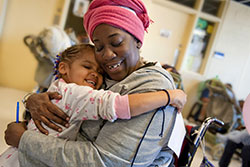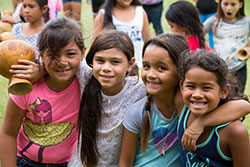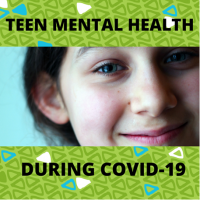Dealing with the ups and downs of high school, family life, and the general anxiety that comes along with entering adulthood has never been easy. But, during these unprecedented times, from a global pandemic to national protests around racial injustice and police brutality, being a young person is even more challenging. Along with coronavirus comes a whole other kind of crisis that isn’t being discussed: mental health.
As of 2018, approximately 1 in 5 teenagers suffered from a mental health disorder. This is without all of the pressures that 2020 has brought with it. The current state of increased tensions and anxiety stems from trying to keep in touch with friends from school, emotionally coping with the reality that life may not return to normal for a while, and the anti-racism movement being at the forefront of the media cycle, just to name a few of the issues that teens are trying to deal with, all while trying to stay safe. With this being said, teenagers understandably are at a higher risk for mental health disorders during the COVID-19 pandemic. This problem is only amplified in New York as New York City has been an epicenter of the pandemic.
Along with the increased tension, there is a decreased accessibility to mental health services. For example, as a college student myself, I had access to 24/7 counseling and psychological services that I could use as much as I liked when I was still on campus. Many students rely on the services provided by their schools to get the support that they need, but with the sudden end to the last school year – and the uncertainty surrounding the upcoming school year – it is difficult for many of these students to continue to get access to the mental health services that they need. Since being sent home, the demand for these services has increased, but the supply of support has not.
Even if students are able to continue or receive support from home, it is different. For example, talk therapy is a very common mental health service that many students use. If you are able to have a Zoom appointment with your therapist for example, that is better than nothing, but it still presents its own set of challenges. For one, it is very likely that privacy will be compromised, especially for children living with their families. It is so hard to benefit from talking freely when a child is constantly worried that their parent or family member could enter their safe space at any time and hear what they are discussing. Along these lines of spending more time in the house, children with difficult home lives and strained relationships with their relatives may be suffering more. Additionally, many students don’t have access to adequate technology which will greatly limit their options for what kind of remote mental health services they are able to receive.
Overall, students are at a higher risk for mental health issues with fewer solutions available, for a variety of reasons, with privacy and technology challenges just being a couple. Parents and families should be aware of this and work with children and youth to figure out ways to be helpful and supportive of their mental health, especially during this time. A couple of ways that this can be done is by talking gently with your children about the pandemic to understand what they know, discussing what young children can do to be actively anti-racist, and being sure to take media breaks and time to relax. With the upcoming school year fast approaching, it is essential that we prioritize the mental health needs of New York’s children and youth now more than ever. We must increase resources and accessibility and raise awareness about this critical issue.




